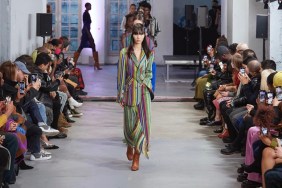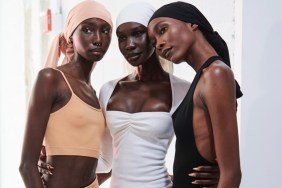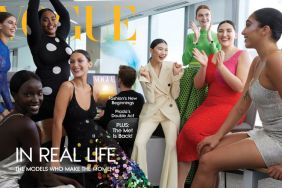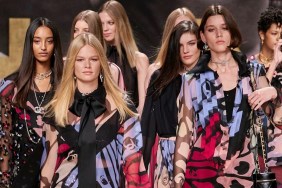Since the letters were sent out, there seems to have been a conscious decision by a few designers to add a little more diversity, not only on their runways, but in their campaigns. But how far-reaching are these efforts? If the Fall 2014 campaign season is any indication, the answer is not very.

Image: Tommy Hilfiger
We combed through 283 fashion campaigns this season (leaving out beauty and fragrance) to see just how diverse the Fall 2014 campaigns were. We looked at every girl, taking special note of any women of color used this season. We classified POC as any nonwhite person of African, Asian, Middle Eastern or Native descent, also adding multiracial women into the pot. Fashion is all about appearances, and while there were some women who could technically be considered “ethnic” (at least to the Western world, which is a whole other issue in itself), we only counted those women who appeared to be of color. It’s nice and all to use a girl of, say, partly Middle Eastern descent, but if she simply looks white when you look at the campaign, you’re going to read “white.” Diversity is something that needs to be seen, and if it doesn’t register, then it’s pretty much not there.
On to the girls. As one might expect, the numbers were pretty bleak. We counted roughly 285 girls used in the campaigns. Out of those, only 32 were models of color, about 11 percent of the total girls. The models of color featured the most were Binx Walton, who appeared in Balmain, Chanel and Coach; Malaika Firth, who posed for Burberry, Tommy Hilfiger and Zara TRF and Joan Smalls, making appearances in Gucci, ICB by Prabal Gurung and Missoni. Other standouts included Issa Lish (Balmain, Coach), Ysaunny Brito (Balmain, Neil Barrett), Liya Kebede (H&M, Louis Vuitton), Tian Yi (Marisfrolg, MICHAEL Michael Kors), Bonnie Chen (Brunello Cucinelli, Hogan) and Liu Wen (La Perla, MO&Co.).

Image: Tom Ford
Comparing the top girls of color to the top girls overall this Fall 2014 campaign season, there isn’t really much of a comparison. Each of the top three girls of color was only featured three times. Whereas the top white models like Gisele Bündchen, Andreea Diaconu and Karmen Pedaru boast between six and seven appearances each, Binx, Joan and Malaika have only half of those. In fact, Karlie Kloss, Lindsey Wixson, Josephine Skriver, Gigi Hadid, Freja Beha Erichsen, Crista Cober and Josephine Le Tutour weren’t even included in our “top girls” category and they still were featured more times (four each) than our top three girls of color.
Roughly 31 percent of the models of color were used more than once, compared to white models who were featured more than once about 35 percent of the time. Balmain took the crown for most diverse campaign, as one of the only ones to have predominantly cast models of color.

Image: Balmain
So, what does this say about Fall 2014 fashion? Obviously, the numbers are disheartening. The fact that there were so few models of color used for any campaigns shows that although there are some designers who are happy to pay lip service to the industry’s diversity issue, there are few who actually step up and feature nonwhite models in campaigns. Runway diversity improved a paltry 1 percent from the Spring 2014 season (at least in New York), since Hardison & co. sent out those letters, and it appears that the Fall 2014 campaigns aren’t doing too hot, either. Roughly 79 percent of the models used on the runways were white. For the latest campaigns, it hovers around 89 percent.
Whether the exclusion is conscious or unconscious, the fact of the matter is that there simply needs to be more representation. Lots of times, casting directors attribute the lack of diversity to the fact that agencies don’t have as many models of color available, but if Andreea can be cast in six campaigns, why not Joan, Liu, Binx or Issa?
There is little excuse, really. We can only hope that looking at these cold, hard numbers will inspire designers and casting directors to be a little more conscious of who they’re choosing for campaigns in the future. There simply needs to be more diversity — period. Fashion is a global industry and there are beautiful, tall, skinny (body diversity is another issue, but we won’t go there) women of all races and nationalities all around the world. Model scouts: You can find them. Casting directors: You can book them. Designers: You need to demand them.
Additional reporting by Elena Drogaytseva







